Today we are taking a look at the ASRock Fatal1ty H270 Performance Motherboard. This is the latest installment from ASRock’s FATAL1TY series, featuring the Intel H270 chipset. This board is built for the gamers who requires the best of the Intel 200 platform without taking CPU overclocking into account. That said, it is best paired with non-K CPUs for the maximum bang for the buck.
The ASRock Fatal1ty H270 Performance features an 8 phase CPU power design with 40A chokes, 4 gold plated DIMM slots that supports 2400 MHz kits, and loads of connectivity options at around 6, 500 PHP (130 USD). Other features includes an enhanced audio solution, a 15μ gold contact steel reinforced PCI-E slot, and High Density Glass Fabric PCB that should combat the extreme humidity at tropical climates.
Table of Contents:
Specifications
| ASROCK FATAL1TY H270 PERFORMANCE | |
| CPU SUPPORT | 7th and 6th Generation Intel Core i7 / i5 / i3 / Pentium / Celeron Processors |
| CHIPSET | Intel H270 Chipset |
| POWER PHASE | 8+1 Power Phase Design |
| MEMORY SUPPORT | 4 x DDR4 @ 2400 / 2133 MHz non-ECC, un-buffered, Intel XMP 2.0 Compliant |
| EXPANSION SLOTS | 2 x PCI Express 3.0 x16, 4x PCI Express 3.0 x1 |
| MULTI-GPU SUPPORT | AMD CrossFireX (Quad Max) |
| DISPLAY OUTPUT | VGA, DVI-D and HDMI with Triple Display Support |
| AUDIO SOLUTION | 7.1 CH HD Audio via Realtek ALC1220, TI® NE5532 Amplifier |
| LAN | Gigabit PHY Intel I219V |
| WLAN | N/A |
| M.2 SLOTS | 2 x Ultra M.2 Sockets, 1x M.2 Socket E |
| SATA PORTS | 6 x SATAIII |
| USB PORTS | 1 x USB 2.0, 3x USB 3.0, 1x USB 3.0 Type-C |
| COOLING | Passive VRM and PCH Cooling, 4x 4-Pin Fan Headers |
Intel Z270 Chipset
The Intel 200 Series Platform, specifically both the Intel Z270 and H270 chipsets are all about connectivity. They feature an upgraded Intel Rapid Storage Technology (IRST) version 15, native support for the Intel Optane Technology, and additional downstream HSIO lanes compared to the last generation. Those down stream lanes could be configured by the board partner to either support additional storage, audio, or even networking options.
The platform is the official chipset for the Kaby Lake CPUs, but it will still support the Sky Lake CPUs. That said, system builders who are still using Windows 7 and the 6th Generation Intel CPUs wanting to go with the latest platform are not required to upgrade to the latest OS Microsoft has to offer. That’s right, Kaby Lake will officially end Intel’s support for Microsoft’s Windows 7 OS.
Intel Kaby Lake Processors
The Intel Kaby Lake Family of processors is the 9th generation of Intel’s Core Series CPUs. The Kaby Lake Family is practically identical to the Sky Lake architecture wise with small underlying differences. It is still based on the 14nm node, has the same Instructions Per Clock, and is just basically a repacked Sky Lake to support the Intel Optane technology.
Now the differences, while not astounding are just proper for Intel to refresh their annual product line-up. Intel is able to put a 12% maximum performance gain via an improved design process, which basically means that they are able to push higher frequency envelope without amping up the TDP. The Intel Core i5 7600K for example, features a 91W TDP with a 3.8GHz Base Clock and a 4.2GHz Turbo Clock. That is 300 MHz higher over the 95W TDP Core i5 6600K for both the base and turbo.
Another thing worth noting is the updated Intel Speed Shift technology. It allows the Kaby lake CPUs to jump at Turbo Clocks faster than older generations. That, together with a new video decode unit, the Intel HD 630 IGP, is why Intel is marketing the Kaby Lake as a 14nm+ micro-architecture. The “+” is just too important for them to state that this is indeed a flushed 14nm package.
Unboxing
You’d get the Fatal1ty H270 Performance nicely protected inside an ASRock standard packaging for their higher end series of boards. It is cradled by a foam frame, and is zip tied to it as well.

Inside, you’ll get a few paper works, a software DVD with a case badge inside, and a back panel IO plate. SATAIII cables counts to Two, and you’d get to receive screws for the M.2 slots as well.

Bundle is nice, but another set of SATAIII cables would be nicer.
Design
The ASRock Fatal1ty H270 Performance is a proper looking gamer centric motherboard with a standard ATX form factor and a matte black PCB. The VRM and PCH heatsink gave it a proper gaming glow, together with the accented PCB markings for the Ultra M.2 slots. There are 4x PWM fan headers here, with the Two situated at the top for your CPU cooler whilst the other pair is at the bottom for your chassis fans.

The back of the board is clean, with only a few screws sticking out that shouldn’t be a problem with majority of cases as far as unintended grounding is concerned.

Looking at the top allows us to take a nice look at the IO panel cover that runs down to audio solution of the board, together with the VRM heatsinks for the 8 phase CPU power. 8 phase of power is simply more than enough for a non OC board.

Expansion slots are pretty neat. You’d get 4x PCI-E 3.0 x1 slots that accepts full length cards, and two full size PCI-E 3.0 slots in a x16 and x4 electrical configuration. This board only supports AMD’s CrossFireX Multi-GPU configurations. Quad is supported but it is impossible to be utilized without a PCI-E riser, and if the M.2 slots are occupied.

The H270 Performance has 4 well spaced DDR4 DIMM slots that supports a maximum of 64GB capacity when fully populated. Maximum frequency is at 2400MHz, but it supports XMP 2.0 nonetheless. Connectivity on this area is provided by dual USB 3.0 headers, 6x SATAIII ports, and a M.2 slot just below the PCH.
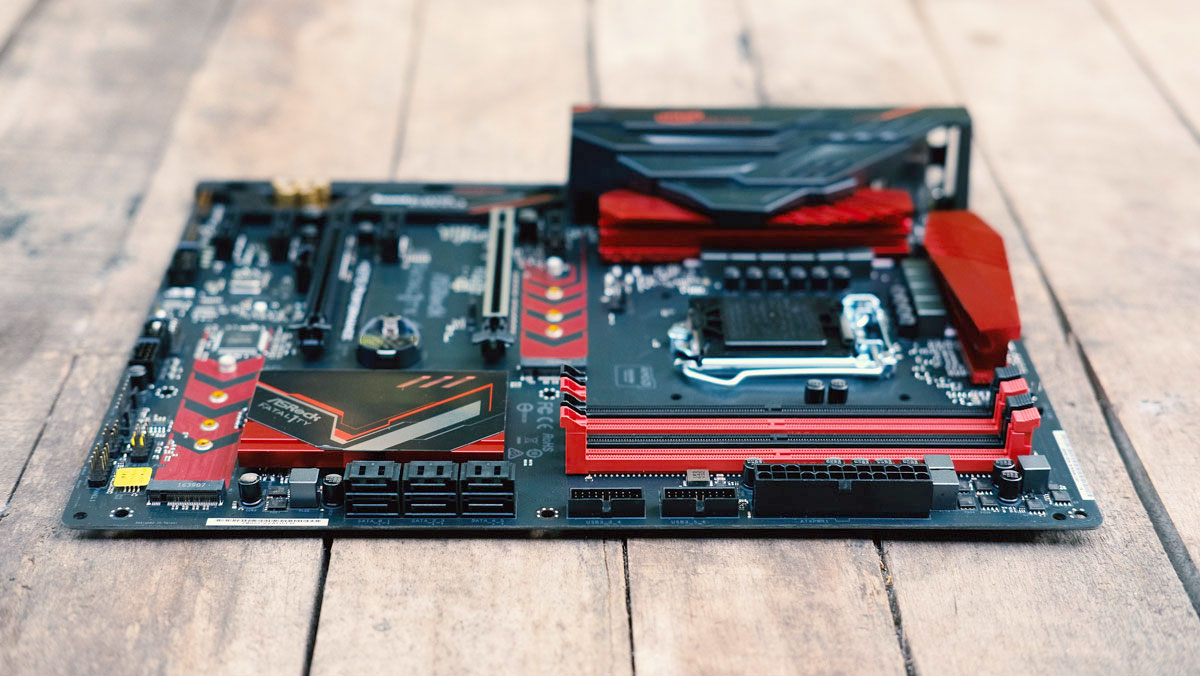
The headers below the board are your usual suspects. You’d get a front panel audio header here, TPM, COM header, 2x PWM fan headers, 2x USB 2.0 headers, and a LED header for ASRock’s AURA RGB feature.

Back panel IO connectivity is not lavish, but you’d get proper tools here to get you started. A combo PS/2 port and 2x USB 2.0 ports should be enough for your main gears, while 4x USB 3.0 ports (1x Type-C) allows you to make room for hi-speed external drives. Should you require Key-E M.2 WiFi+BT adapter, the board comes equipped with the necessary stands as well.

Firmware
The UEFI of the H270 Performance is quite similar to the Z270’s interface. If you’re coming from the likes of ASRock boards based on the Intel 100 chipsets, chances are, you’re going to feel right at home with this one. For an instance, the EZ Mode still houses all the necessary tools to get you started.

The tool sub menu built within the EZ Mode allows you to flash the board’s firmware via the internet or any USB devices which is helpful if you require an update. The system browser on the other hand reveals your chipset features and allows you to browse which devices uses the ports scattered on the board. The FAN-Tastic Tuning allows you to set the fan curve of the various fans attached to the motherboard’s PWM fan header.

The OC Tweaker is where you’d probably stay put inside the UEFI since this is where you could manually play with your CPU and memory’s settings. With the H270’s case, you’re left with a few options since this chipset only offers a few tweaking options for the CPU and RAM.

DRAM frequency can be manually set and of course, you can’t actually get past 2400 MHz with this board. Use this if you’re trouble shooting, or if your kit is capable of running up to 2400 MHz.

There are 2 temperature sensors found within the board, and you can monitor them at the HW Monitor menu. Fan speed and voltages are monitored on this area too.

The UEFI of the motherboard is snappy, and hiccup free. It is locked at 1024 x 768 (4:3 aspect ratio) though so we’d love to see a proper 16:9 support in the near future.
Software
Since this board comes with the ASRock AURA RGB feature, the board comes with a software capable of assigning lighting options to the 4 lighting areas. LED effects includes breathing, and static among others.

Since this is a FATAL1TY product, there is an included mouse polling rate adjustment. Slotting the mouse to the FATAL1TY mouse port is necessary for this feature to work.

Even though this is a non OC board, ASRock still decided to throw in the F-Stream software for good measure. If you’re into underclocking, then this software should help you.

Along with a impedance sensing audio solution, ASRock bundled the board with the Sound Blaster Cinema 3. I don’t really like coloring on my audio setups but this one appealed to me on a immersive level.
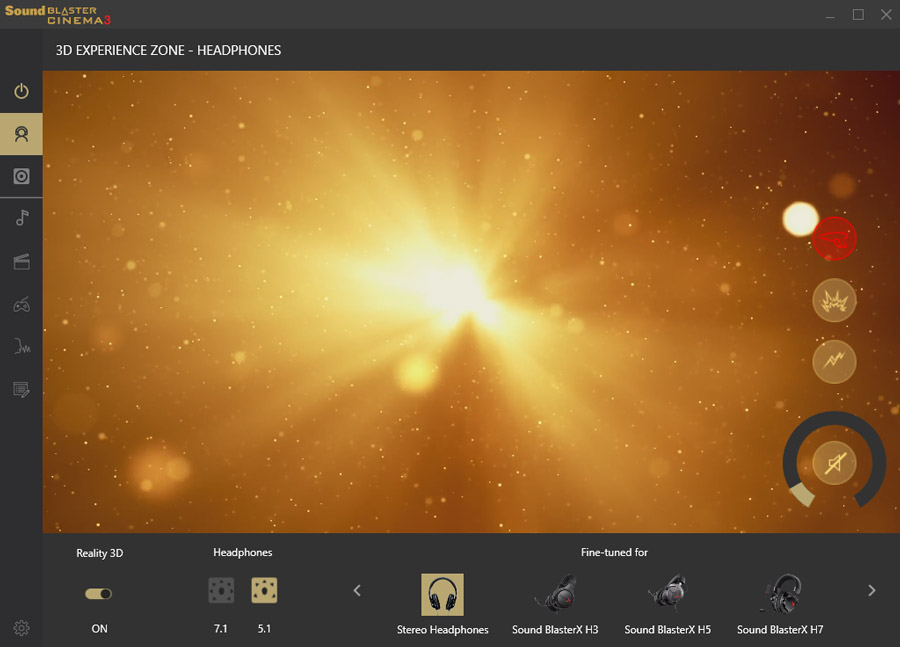
Test Setup
The motherboard’s performance will be evaluated by various benchmarking tools, and applications with the CPU, memory, storage, and audio performance being the focus of the tests. We are testing this motherboard with the high performance settings enabled at the OS, with the default UEFI configuration, and XMP enabled if possible. No extra softwares or applications are installed and running during the benchmarking process. The test system specifications are laid out below:
| PROCESSOR | INTEL CORE I5 7600K |
| MOTHERBOARD | ASROCK FATAL1TY H270 PERFORMANCE |
| CPU COOLER | CRYORIG C1 TOP FLOW |
| MEMORY | CRUCIAL BALLISTIX TACTICAL 16GB KIT |
| GRAPHICS CARD | ASUS GTX 1060 STRIX OC 6GB |
| STORAGE | BIOSTAR G300 SSD 240GB |
| POWER SUPPLY | CORSAIR RM850X 850W |
| DISPLAY | 27″ DELL U2715H WQHD IPS PANEL |
| OPERATING SYSTEM | MICROSOFT WINDOWS 10 PRO |
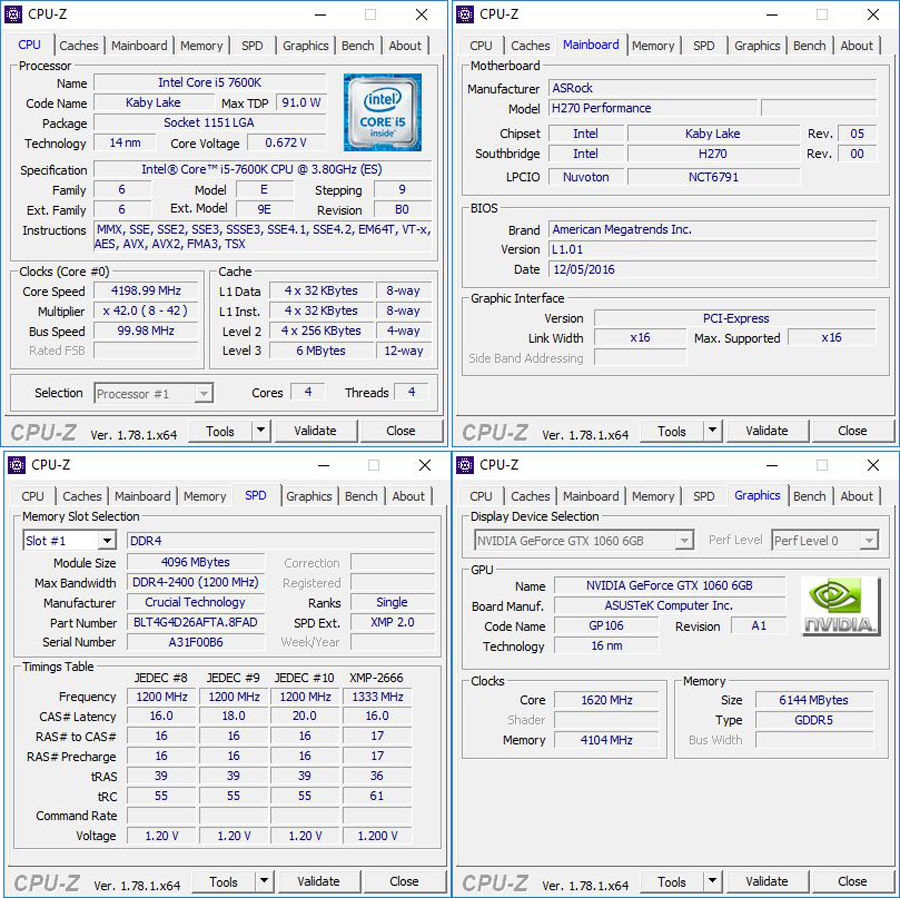
Power
The AIDA64 Extreme Edition’s System Stability Test is used to stress the system to gauge its overall power draw. We selected all the the stability test options available with a 15 minute run time. Sleep (S3) and soft-off (S5) states are also tested.

CPU and Memory
Super PI is a single-threaded benchmark that calculates pi to a specific number of digits. The 32M calculation is used to to gauge the system performance.

wPrime is a multi-threaded benchmarking application designed to measure the raw computational power of a CPU. The 32M and 1024M calculations are used to to gauge the system performance.

AIDA64 Extreme Edition is a streamlined Windows diagnostic and benchmarking software. We are going to use the built-in memory benchmark tool to gauge the system performance.

Graphics
3DMark 2013 is a suite of benchmarks catered for the gamers and enthusiasts. It features benchmark presets suitable for wide range of systems. The total system scores from the FireStrike presets is used for comparison.
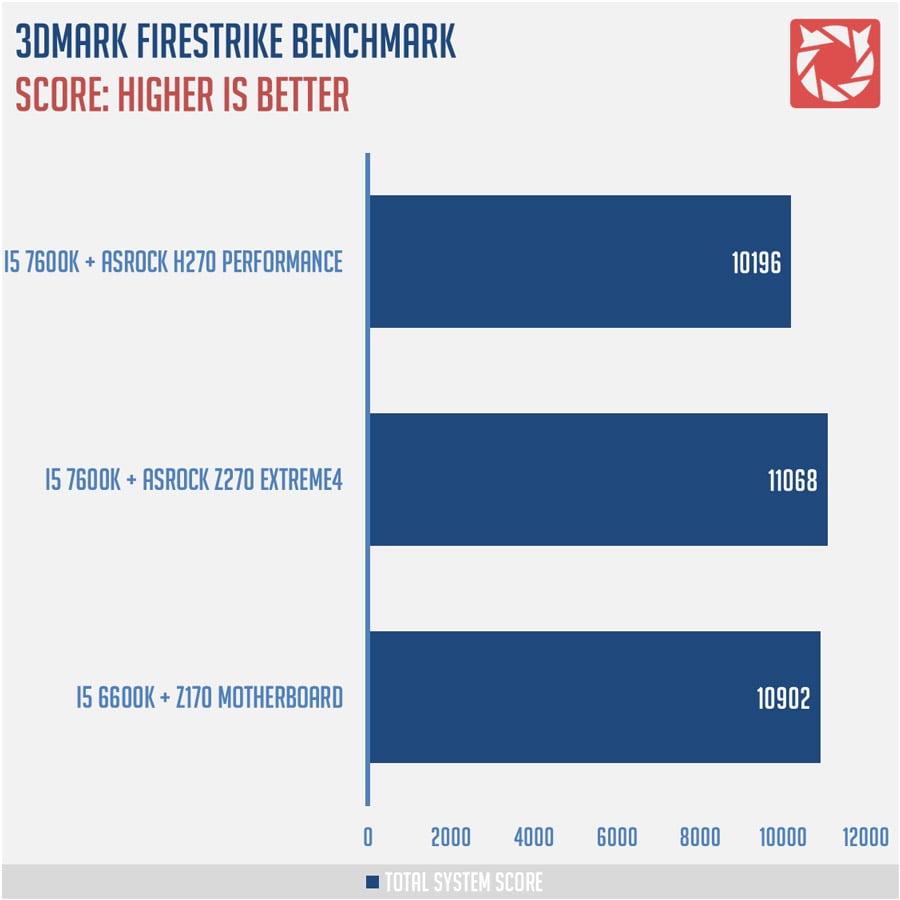
CINEBENCH R15 is used to test the system’s performance under OpenGL load. The graphics card has to display a huge amount of geometry and textures, as well as a variety of effects.

The Witcher 3: Wild Hunt is an action RPG set in an open world environment, developed by CD Projekt RED. It runs on the REDengine 3 utilizing the 64-bit precision of modern personal computing, and DirectX 11, allowing for better quality computer graphics via high dynamic range rendering.
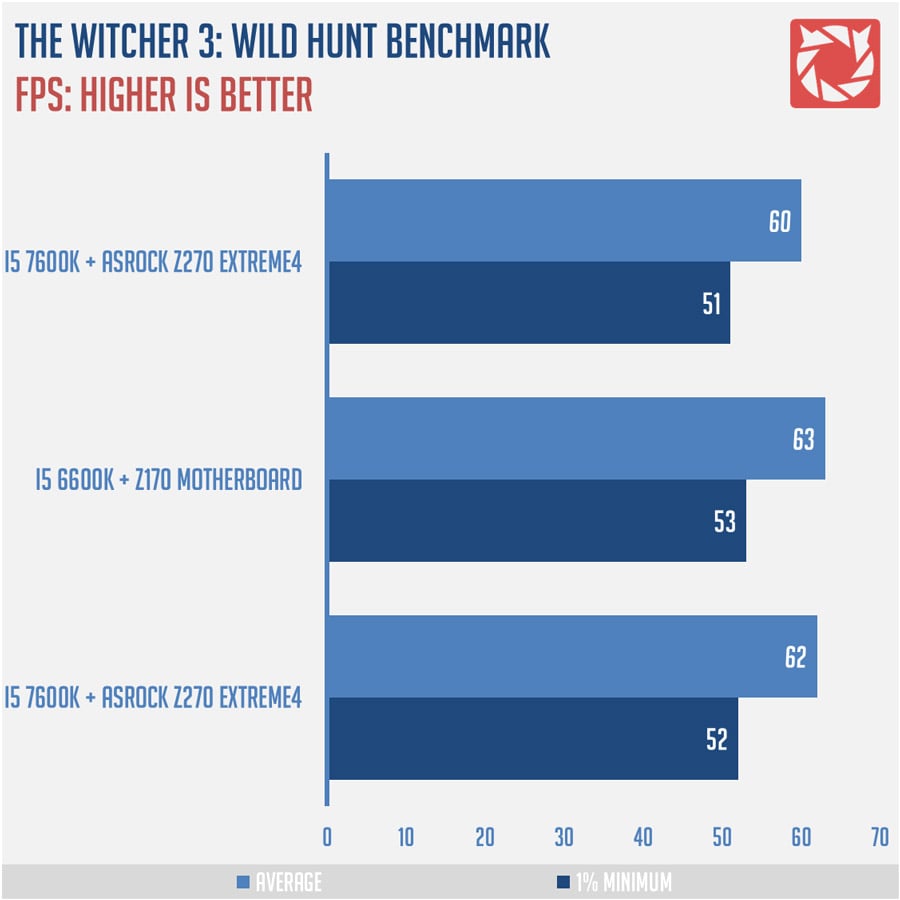
Applications
GIMP is a free and open-source raster graphics editor used for image retouching, drawing, editing, and conversion. A 7 MB worth of images will be processed, and converted to gauge the system performance.

HandBrake is a free video encoding tool that supports a wide variety of media codecs. A 150MB worth MP4 video will be converted using the H.264 codec to gauge the system performance.
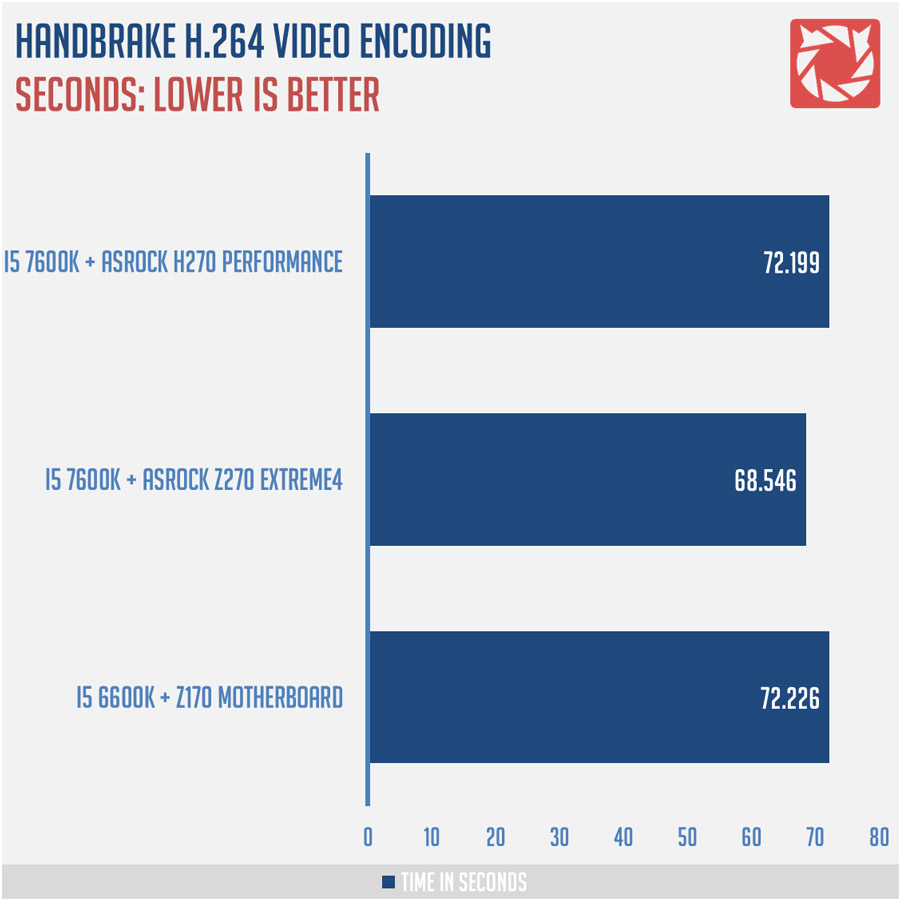
WinRAR is a file archive utility for Windows. It can create, view archives in RAR or ZIP file formats, and unpack numerous archive file formats. We are going to use the software’s built in benchmark tool to gauge the system performance.

Storage
Crystal Disk Mark is a storage benchmarking software widely used through the industry. We are going to use the software’s sequential read and write benchmark to test the system I/O performance.

Audio
RightMark Audio Analyzer (RMAA) is a suite designed for testing quality of analog and digital paths of any audio devices. The results are obtained by playing and recording test signals passed through the tested audio path by means of frequency analysis algorithms. A high quality 3.5mm stereo male to male audio cable is used to loop both the line-in and line-out of the system with a sample rate of 24-bit at 48 kHz. The recording level should be around -1dB if possible, with software audio enhancements disabled.
| Frequency response (from 40 Hz to 15 kHz), dB |
-0.00, -0.01
|
Excellent
|
| Noise level, dB (A) |
-98.3
|
Excellent
|
| Dynamic range, dB (A) |
98.3
|
Excellent
|
| THD, % |
0.0035
|
Very good
|
| THD + Noise, dB (A) |
-85.5
|
Good
|
| IMD + Noise, % |
0.0059
|
Excellent
|
| Stereo crosstalk, dB |
-96.2
|
Excellent
|
| IMD at 10 kHz, % |
0.0051
|
Excellent
|
| General performance |
Excellent
|
The Purity Sound 4 is a perfect solution to accurately reproduce the sound from the source. It scored an almost perfect grading from RMAA, and that is just awesome for starters. Frequency response is stupendous, with slight roll-offs around the lower-bass region, and a generally flat performance until the end of the sweep. This one is good!
Conclusion
The ASRock FATAL1TY H270 Performance might not be able to unleash the full potential of K CPUs, but it is more than enough to satisfy your requirements if you’re building a Kaby Lake based gaming PC. That is without overclocking in mind. Since the Non-K CPUs are also less expensive compared to their K counterparts, the H270 chipset carried over the appealing value of its older counterpart.
Performance is right at the top, with the memory performance being our only concern at some apps and games. Since our kit can only utilize 2400MHz maximum as per H270’s specifications, that has to be expected. Compared to 2666 MHz+ capable Z170 and Z270 chipsets, the H270 is just made for non-K operation.
Build quality is great, and I can’t really find major faults with the board’s design plus the layout. The feature set of this board is nothing but nice – you’d get an excellent audio solution with a Creative software to tune things up, ample amount of fan headers at your disposal, and an RGB LED lighting option that suits the gaming oriented design of the board. The thing also comes with an option to slap a Key-E WiFi + BT card onto the extra M.2 slot. For your consideration, the Fatal1ty Mouse Port is also included.
The ASRock Fatal1ty H270 Performance is a rock solid 6, 900 PHP board that should allow you to enjoy all the necessary features of the H270 chipset. If overclocking is not your thing, then this board should appeal to you both value and feature wise.
ASRock Fatal1ty H270 Performance
Summary
The ASRock Fatal1ty H270 Performance is a rock solid 6, 900 PHP board that should allow you to enjoy all the necessary features of the H270 chipset. If overclocking is not your thing, then this board should appeal to you, value and feature wise.







5
Hello guys, l need a hand here. I d like to buy this board in combo with CPU and RAM, have great price from my friend, but here is the thing. I have my beloved Asus Xonar D2 sound card from my current PC, and l would like to keep her and put in this new combo :/ Since there is no slot for her, what should l do? He said it can be installed in GPU slot, but l have doubts. Please can you help? Many thanks :)
Unfortunately, you are correct. The sound card is PCI and wont fit into a PCIe slot.
You may still be able to use it though via a PCIe to PCI riser.